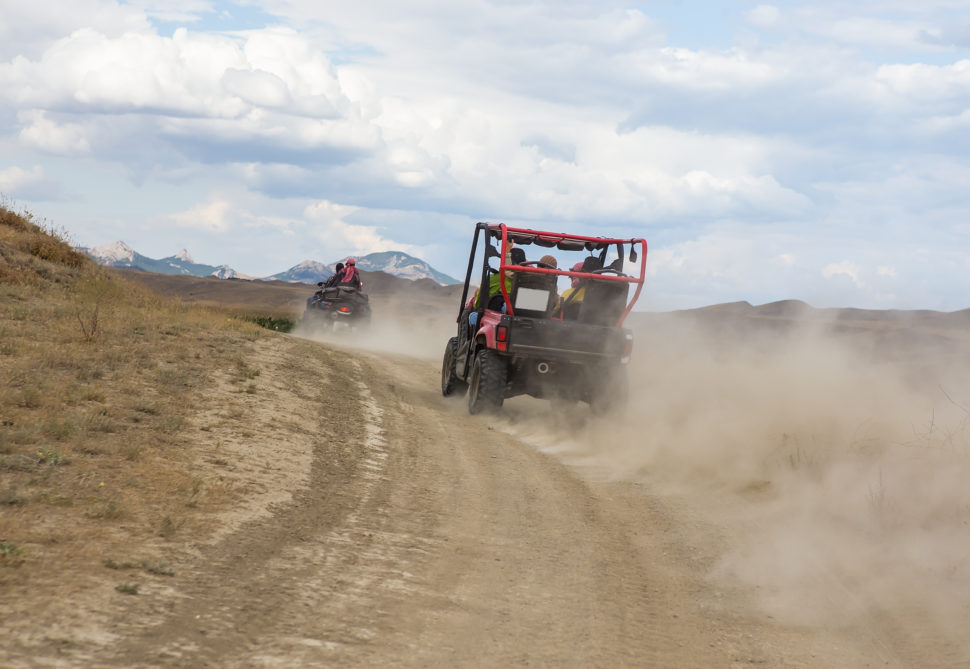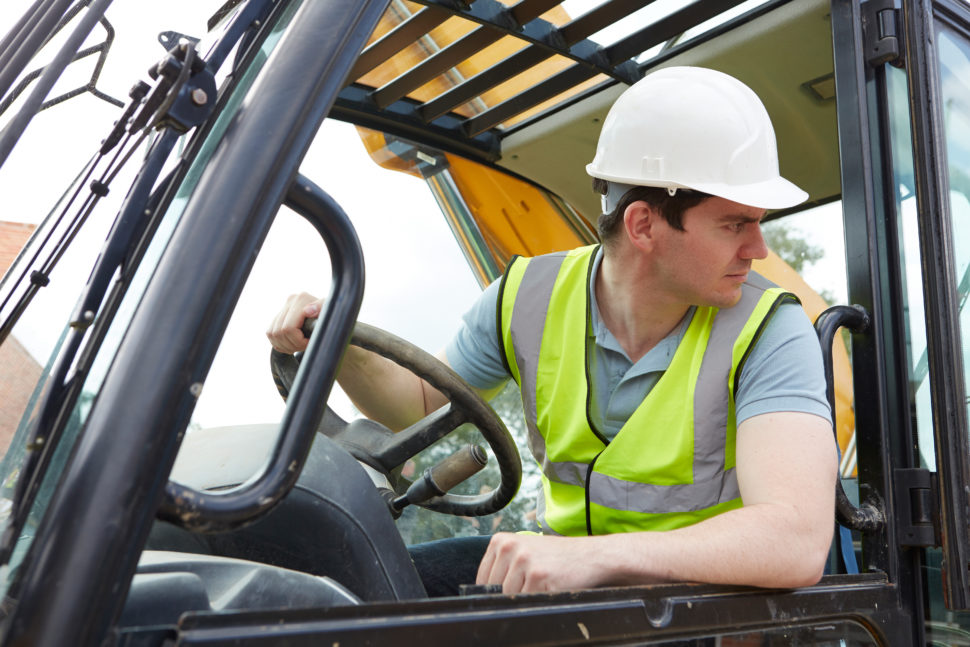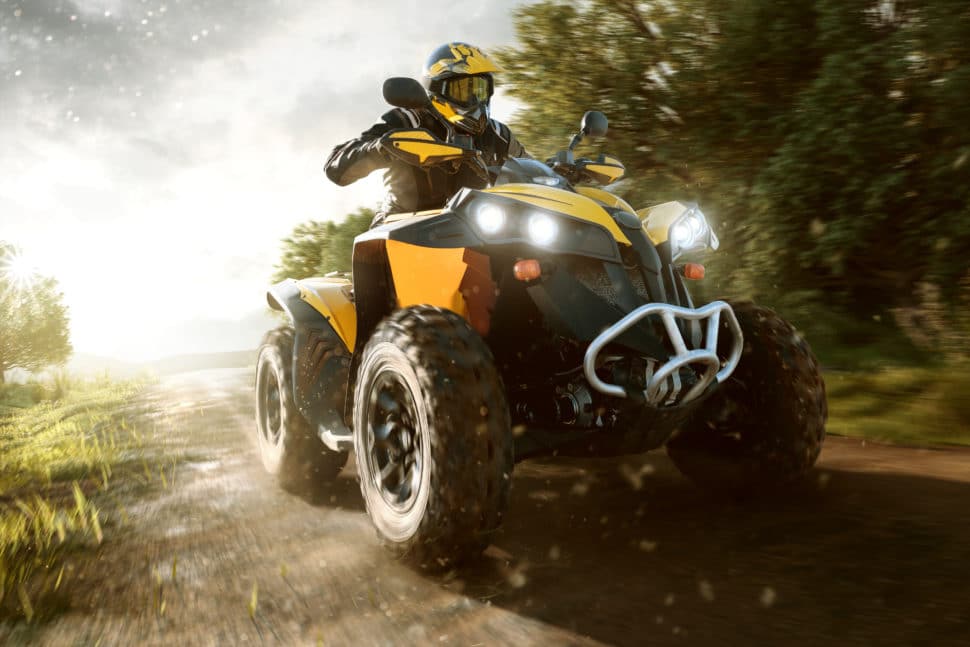All-terrain vehicles and utility vehicles, or ATVs and UTVs, are popular for outdoor activities like hunting, fishing and trail riding, but they are also are useful on remote and large worksites, like rural areas or large, multi-building campuses.
Despite being fun to operate, it is important to remember they should never be used or treated like a toy and employers should train all employees who may use an ATV or UTV over how to operate and properly care for the machine.
What Is The Difference?
ATVs are popular both for business and pleasure, but riders must remember they can cause serious injuries if not used safely. ATVs are rider-active machines, which means the rider must use their own strength and body weight to ride. They do not have seatbelts and, unless designed for two riders, should only be used by one person. Without seatbelt protection, riders can be thrown from the ATV or pinned underneath it.
Compared to ATVs, UTVs look and act more like a car. Accordingly, they are made to be driven, not ridden. The driver uses a steering wheel, an accelerator and brake pedals, and there are seatbelts for the driver and any passengers.
Of course, UTVs should not be treated like a typical car. They have a smaller wheelbase and a higher center of gravity that shifts while driving, making tipovers more likely. They also do not offer crash protection, and UTV drivers and passengers can still be severely injured or killed if the UTV overturns or crashes.
Depending on the worksite and work an employee is performing, they may use an ATV, UTV, or both. ATVs and UTVs have several features in common:
- Four or more low-pressure tires
- Two-wheel or all-wheel drive
- Headlights and taillights
However, even with these many similarities, users must understand that the two vehicles are operated differently and may require unique safety measures.

Using an ATV or UTV on the Job
ATVs used on worksites will generally only allow for one rider and should not be used to tow or haul anything, unless the manufacturer has approved it.
Some common work environments ATVs are found in include:
- Land management and surveying
- Pipeline management
- Search and rescue
- Border patrol and security
UTVs, on the other hand, will generally be used for a driver and one or more passengers. They may also be used for cargo, as they will typically offer storage space in addition to passenger seating.
- Construction operations
- Emergency medical response
- Military operations
- Ranching and farming
Regardless of which vehicle employees may use while working, both ATVs and UTVs require additional protection on worksites.
Looking for more online safety training content?
Top Safety Hazards
The New York Times has reported that side-by-sides, another name for UTVs, caused approximately 160 deaths and more than 300 injuries in an eight-year period. In comparison, ATVs are linked with approximately 800 deaths and 130,000 injuries each year. It is important to note when comparing these figures that there are significantly more ATVs in use than UTVs. Approximately 10 million ATVs are in use, compared to only half a million UTVs.

Accidents for both ATVs and UTVs can include:
- Losing control of the vehicle
- Rollovers
- Being thrown from the vehicle
- Colliding with an obstacle
Beware of Common Risk Factors
In addition to inexperience and lack of appropriate personal protective equipment (PPE), three additional factors can affect an operator’s ability and decision-making when using an ATV or UTV. Alcohol, drugs and fatigue can all increase the risk of accidents and injuries.
Alcohol and drugs should never be mixed with using an ATV or UTV. Even prescription and legal medications can affect judgement, vision and coordination. Impaired driving is illegal regardless of the vehicle type, and drivers using substances while driving an ATV or UTV can face charges.
Drugs and alcohol aren’t the only types of impairment for ATV and UTV drivers. Driving while tired can be just as dangerous as driving under the influence. Especially when using rider-active ATVs, the effects can lead to accidents and serious injuries. Employees should not drive or ride when tired.
When first using an ATV, employees should be limited to short rides to prevent exhaustion. Employers should require frequent breaks for employees riding or driving, and ATV users especially need to stop and walk around before continuing to ride.
Safe ATV and UTV Operation
When using ATVs and UTVs at work, employees are more likely to be working alone. For those working alone, employers should implement protective measures like check-in procedures, as well as having employees carry survival gear and multiple methods of communication.
Check-ins will usually require a written record with the following information:
- Where the employee is going
- When they expect to return
- How they can be contacted
- Methods of communication

Survival gear will depend on the environmental and terrain conditions on the worksite. Employees should also have alternative plans in case of severe weather or unexpected obstacles and must notify their employer of these plans.
ATV and UTV drivers should both follow similar safe driving habits. Whether riding or driving, users should always look ahead for potential obstacles. Terrain can change daily depending on the weather and seasons, and even if an employee drives the same route daily, it can change overnight. Additionally, employees should never operate an ATV or UTV in swamps or on steep slopes.
ATV and UTV users should never wear loose clothing, shoelaces or jewelry. Especially for ATVs, users should wear either a full or three-quarter face motorcycle helmet. Gloves, long pants and sleeves, and boots are also recommended.
Finally, users should never take an ATV or UTV on regular roads. If employees must cross a road at any time, they should take extra precautions, looking for traffic in both directions and crossing the road at a 90-degree angle.
Before riding, both ATVs and UTVs should be inspected by their rider or driver. Even if the employee uses the same machine every day, an inspection will help prevent mechanical issues. Both ATVs and UTVs should come with a manual that employees can use to help them perform the pre-check.
Always think, and look, ahead. Plan your route before leaving, and as you’re riding or driving, look ahead for any potential obstacles that can change your speed and direction.
Conclusion
Although they are sometimes used for pleasure, ATVs and UTVs should never be treated like toys. Especially when using one for work, employees should be trained over best practices to ensure they can safely operate or ride on either type of vehicle.


